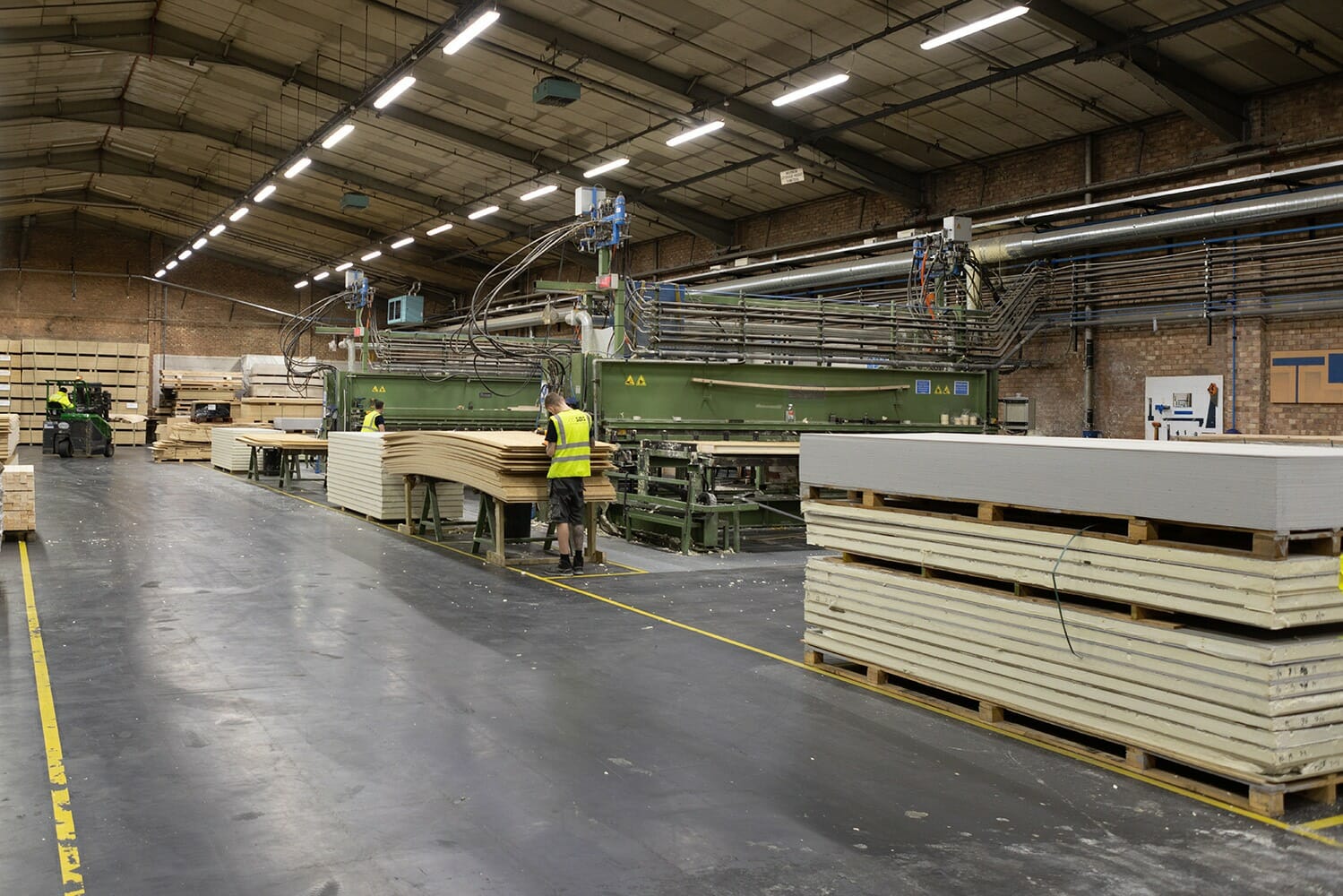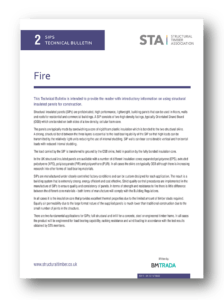All forms of construction must align with the stringent fire performance requirements set by national Building Regulations. SIP-based structures are well-equipped to not only meet but often exceed these essential safety levels, thanks to the correct design, exemplary standards of manufacture, and precise build-up.

- BS 476-21 : 1987 Fire tests on building materials and structures — Methods for determination of the fire resistance of loadbearing elements of construction
- BS EN 1995-1-2 : 2004 Eurocode 5 — Design of timber structures — General — Structural fire design
- EN13501-2:2016 Classification of Fire Resistance
- EN1365-1:2012 Fire Resistance Test
Exceeding the Required Levels
In terms of fire resistance, the external wall linings of SIPs play a crucial role. Typically, this involves the use of Type F (fire/high temperature) plasterboard. One layer of 12.5mm Type F plasterboard, secured to timber battens to form a service void, provides 30 minutes of fire resistance for any SIP wall, irrespective of the SIP type or core insulation material used. Achieving 60 minutes of fire resistance is feasible with two layers of the same plasterboard, showcasing the adaptability and robustness of our SIP construction.
Considerations for Roof and Floor Structures
Generally, specific periods of fire resistance for roof structures are not mandated unless the roof serves as an escape route or constitutes a habitable space. If habitable, the floor to the room-in-roof must offer 30 or 60 minutes of fire resistance, commonly achieved with metal web joists, timber ‘I’ joists, or substantial room-in-roof trusses. This approach mirrors the fire protection strategies employed for timber joisted floors, using plasterboard for effective fire resistance.
Empirical Validation and Further Reading
A wealth of empirical evidence supporting the fire resistance capabilities of SIP buildings is summarised in the BRE Information Paper ref: IP21/10. Funded by the DCLG and undertaken at an independent laboratory, these tests critically assess SIP systems’ performance in realistic fire scenarios, affirming their efficacy and safety.
By opting for our SIPs, you leverage the advanced design, manufacturing precision, and strict adherence to fire safety standards, ensuring a construction solution that significantly exceeds regulatory requirements.







